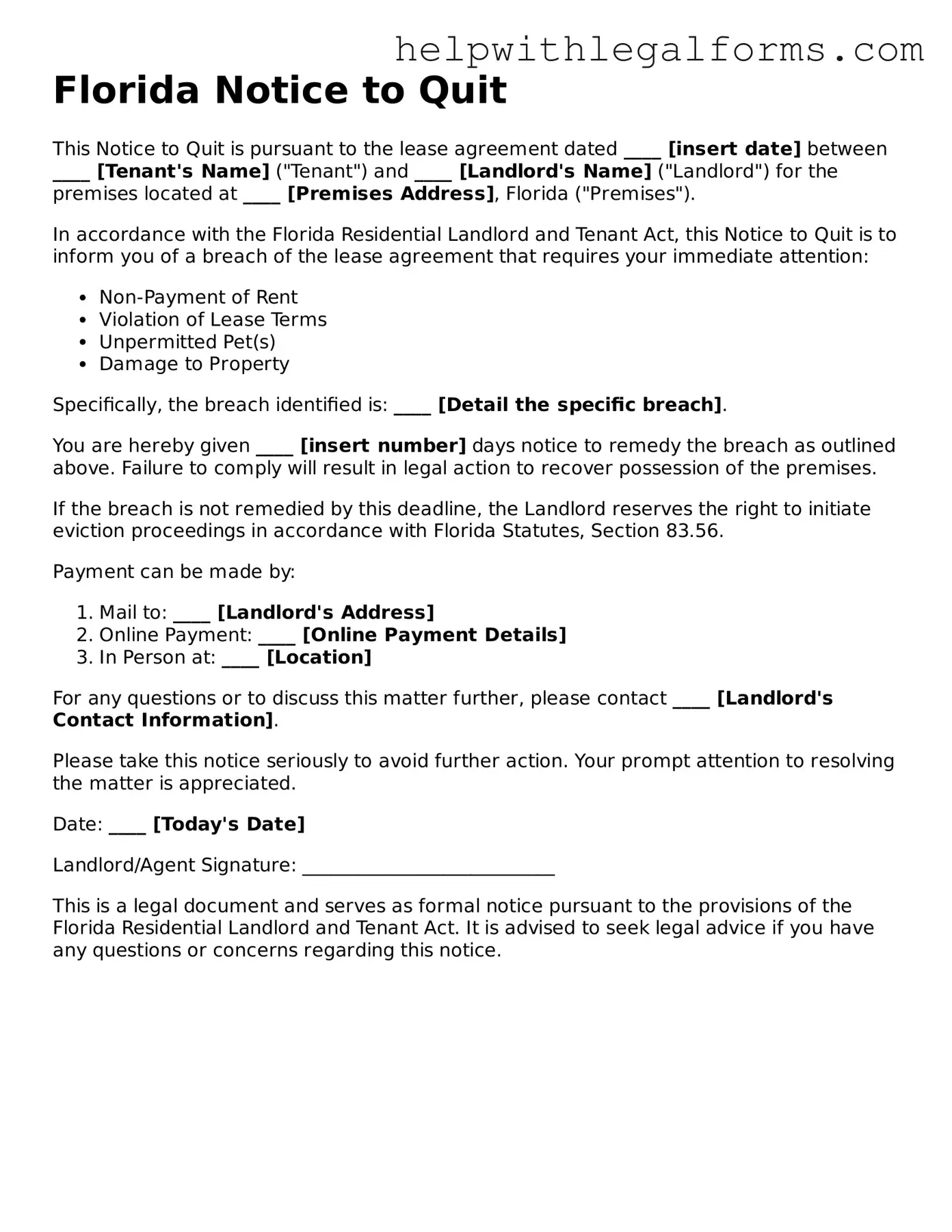What is a Florida Notice to Quit?
A Florida Notice to Quit is a formal document that a landlord sends to a tenant to inform them that they have violated the terms of the lease agreement and must correct the issue or vacate the property. The notice specifies the violation and provides a set deadline for rectification or departure. It serves as the initial step in the eviction process if the tenant fails to comply.
How many days does a tenant have to respond to a Notice to Quit in Florida?
In Florida, the duration provided to a tenant to respond to a Notice to Quit depends on the nature of the violation. For non-payment of rent, tenants are given three business days to pay or vacate. If the issue involves a lease violation other than rent non-payment, the tenant typically has seven days to correct the violation or vacate the premises. However, it’s crucial for specificity, as the statute details may provide different directives based on the specific circumstances.
Can a tenant dispute a Florida Notice to Quit?
Yes, a tenant can dispute a Florida Notice to Quit. If a tenant believes the notice was given in error or disagrees with the alleged lease violation, they can challenge it. This is usually done by providing a written response to the landlord, outlining the reasons why the notice is contested. It's advisable for tenants to gather and submit relevant evidence supporting their dispute. If a resolution cannot be reached, the matter may escalate to court, where a judge will make a determination.
What happens if a tenant ignores a Florida Notice to Quit?
If a tenant ignores a Florida Notice to Quit and does not cure the lease violation or vacate the property within the specified period, the landlord may proceed to file an eviction lawsuit against the tenant. Ignoring the notice does not halt the eviction process. Once in court, the tenant will have the opportunity to present their case, but they also risk incurring legal fees and having an eviction recorded on their rental history if the judge sides with the landlord.
Is it necessary for a Florida Notice to Quit to be notarized?
While notarization of a Florida Notice to Quit is not a legal requirement, it can add an additional layer of authenticity and formality to the document. Notarization acts as a third-party verification that the person signing the document is indeed who they claim to be, which can be beneficial should the case escalate to court. Nevertheless, the critical component is that the notice is delivered in compliance with Florida law, including the required details and timeframe.
How should a Florida Notice to Quit be delivered to the tenant?
The delivery of a Florida Notice to Quit should comply with state laws to ensure it is considered valid. Typically, landlords may deliver the notice personally to the tenant, leave it with someone of suitable age and discretion at the residence, or mail it. Mailing the notice should be done by certified mail to provide a record of delivery. Ensuring proper delivery is crucial, as failure to do so may lead to delays or complications should eviction proceedings be necessary.
